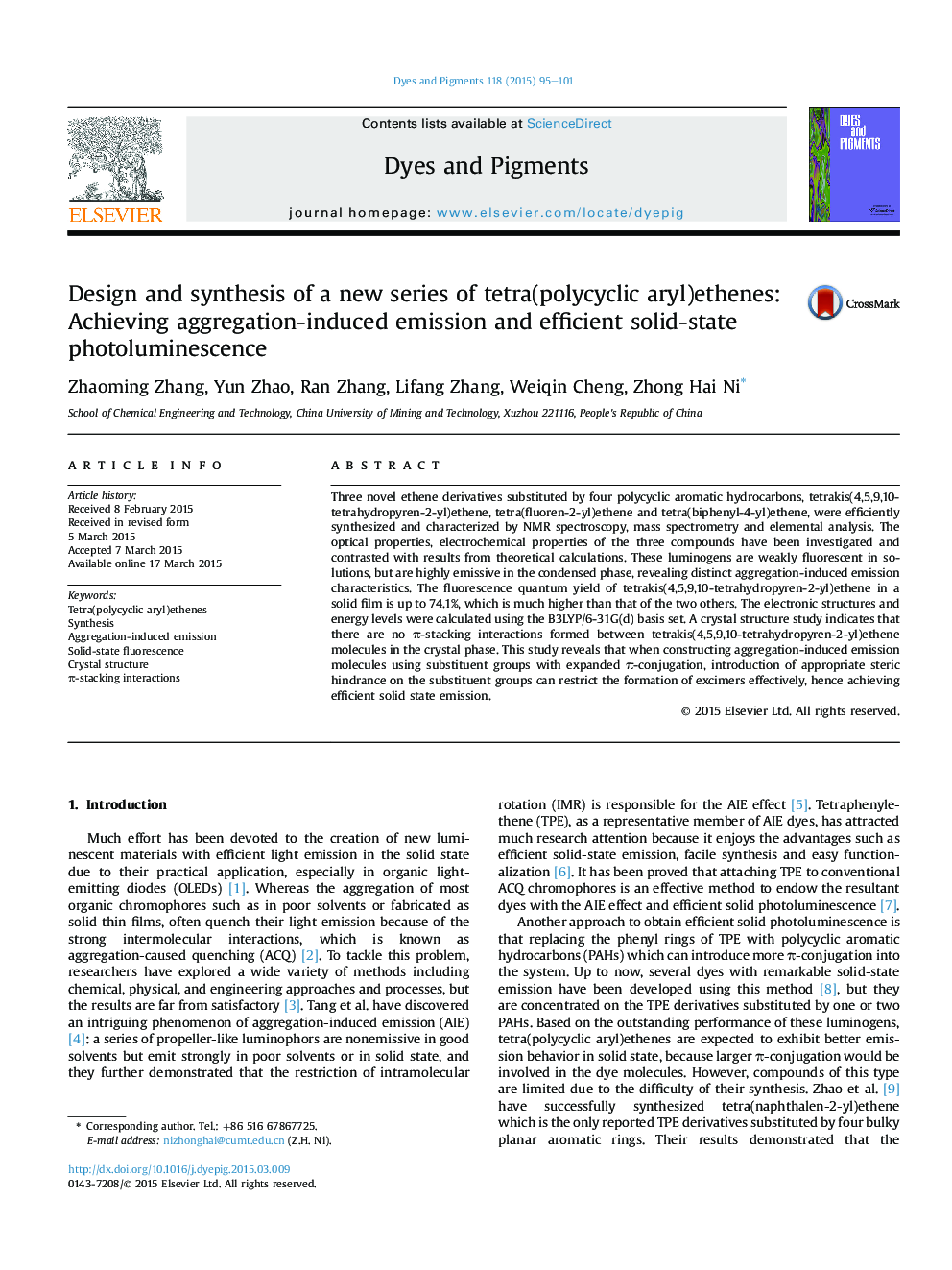| Article ID | Journal | Published Year | Pages | File Type |
|---|---|---|---|---|
| 175884 | Dyes and Pigments | 2015 | 7 Pages |
•A new series of tetra(polycyclic aryl)ethenes have been synthesized.•A convenient method to prepare the di(polycyclic aryl) ketone have been developed.•All of the three luminogens exhibit aggregation-induced emission characteristics.•A new strategy to obtain efficient solid-state emitter has been proposed.
Three novel ethene derivatives substituted by four polycyclic aromatic hydrocarbons, tetrakis(4,5,9,10-tetrahydropyren-2-yl)ethene, tetra(fluoren-2-yl)ethene and tetra(biphenyl-4-yl)ethene, were efficiently synthesized and characterized by NMR spectroscopy, mass spectrometry and elemental analysis. The optical properties, electrochemical properties of the three compounds have been investigated and contrasted with results from theoretical calculations. These luminogens are weakly fluorescent in solutions, but are highly emissive in the condensed phase, revealing distinct aggregation-induced emission characteristics. The fluorescence quantum yield of tetrakis(4,5,9,10-tetrahydropyren-2-yl)ethene in a solid film is up to 74.1%, which is much higher than that of the two others. The electronic structures and energy levels were calculated using the B3LYP/6-31G(d) basis set. A crystal structure study indicates that there are no π-stacking interactions formed between tetrakis(4,5,9,10-tetrahydropyren-2-yl)ethene molecules in the crystal phase. This study reveals that when constructing aggregation-induced emission molecules using substituent groups with expanded π-conjugation, introduction of appropriate steric hindrance on the substituent groups can restrict the formation of excimers effectively, hence achieving efficient solid state emission.
Graphical abstractAdopting 4,5,9,10-tetrahydropyrene with expanded π-conjugation as well as certain steric hindrance to construct tetrakis(4,5,9,10-tetrahydropyren-2-yl)ethene can restrict the formation of π–π interactions. This is an effective strategy to obtain luminogens showing both aggregation-induced emission and efficient solid-state photoluminescence.Figure optionsDownload full-size imageDownload as PowerPoint slide
